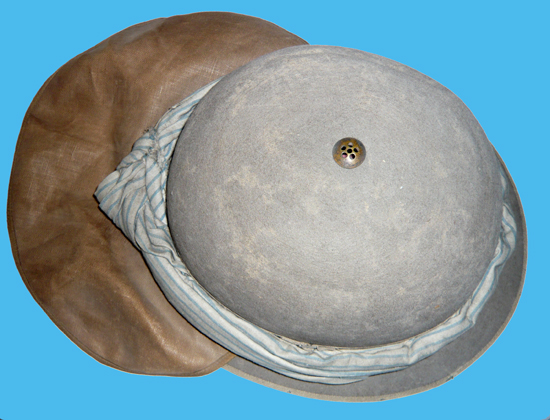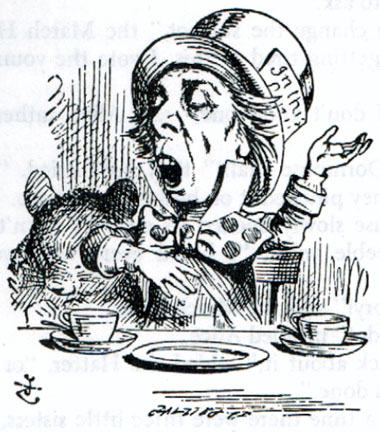Stuart Bates’ article on “Ellwood’s Air Chamber Helmet” from July 5th 2012 describes Ellwood´s patent for a hat suitable for tropical regions. Whatever the shape – the idea is always executed in the same way. There are two shells that do not meet and form an “air chamber” – ventilated by holes or not – where the air is used as isolation against heat. Theoretically, a fine idea – but, as Stuart notes correctly: “There is no provision for the escape of heat, emanating from the wearer’s head, out of the inner shell which must have lessened the overall effectiveness of the design.” Ellwood´s must have had the same thought and here is an example of an Ellwood helmet where their own patent is altered. Continue reading
Category Archives: India
Mr. Julius Jeffreys F.R.S.: A Victorian Eccentric
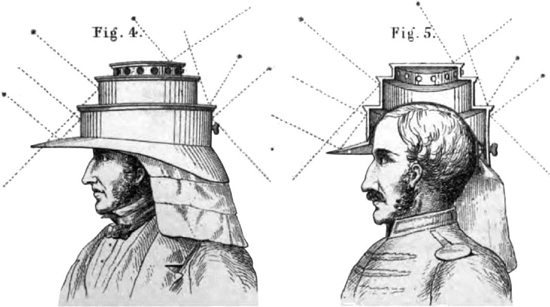
These figures are taken from a talk given to the Royal United Services Institute (R.U.S.I.) in 1860 whose subject was ON IMPROVEMENTS IN HELMETS AND OTHER HEADDRESS FOR BRITISH TROOPS IN THE TROPICS, MORE ESPECIALLY IN INDIA. These drawings, of a civilian hat, were selected to illustrate, up front, the impracticality of this eccentric’s proposed implementation of his theories.
Julius Jeffreys, a Victorian doctor, was an HEIC Staff-Surgeon of Cawnpore and Civil Surgeon of Futtehgurh in India during the 1820s and 1830s. He was a prolific author, traveler, inventor and a champion of the welfare of British troops serving in India and the Tropics. However, although his theories were often of great merit the execution of them was sometimes quite impractical to say the least. One has to add to that his inability to express himself in a concise and readable manner, to which this author can attest having ploughed through a good deal of this man’s turgid prose. Continue reading
Ellwood’s Patent of 1851 for the Air-Chamber Helmet
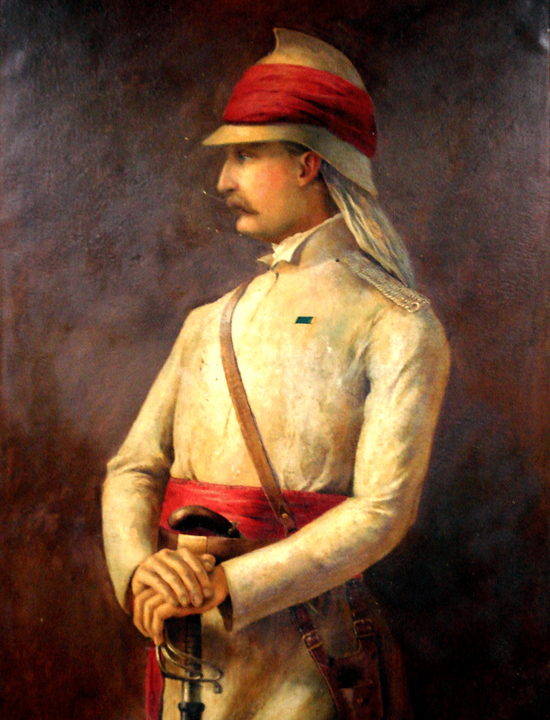
William Stephen Raikes Hodson, founder of Hodson’s Horse, wearing a crested Ellwood’s helmet c1850s.
Ellwood and Sons were among the first, if not the first, English helmet manufacturers to supply the Indian trade and specialized in felt headgear for officers of the Honourable East India Company’s army and later the British Army in India. Their helmets were in use in India during the 1840s but with the advent of cork helmets, especially those of Hawkes & Co., declined in use from the late 1860s onwards. Continue reading
Mad as a Hatter
Bearing in mind that Ellwood & Co. made felt hats for the Indian trade, including the military, I thought the following might be of interest. Continue reading
Hat, Pith, Khaki, Solar
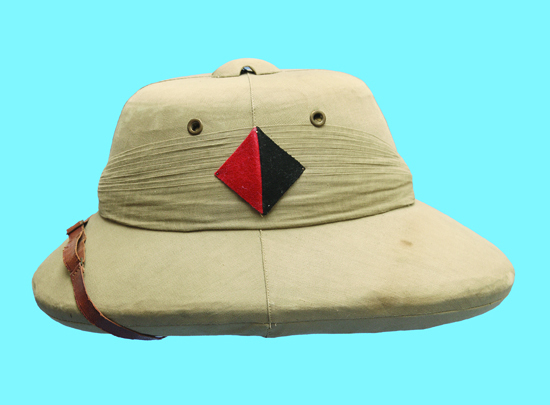
This Khaki Solar Pith Hat is dated 1937 and attributed to Lt. G. C. Moor R.A. It was manufactured by the Peninsular Hat Company of Calcutta. (Author’s collection)
The Khaki Solar Pith Hat was the British Army designation of this civilian sola topee which was used in a semi-official capacity in India and Burma probably from the late 1890s. It lasted, in army use, at least until the end of the Second World War. Continue reading
British Puggarees 2, 3, 4 and 6 Folds
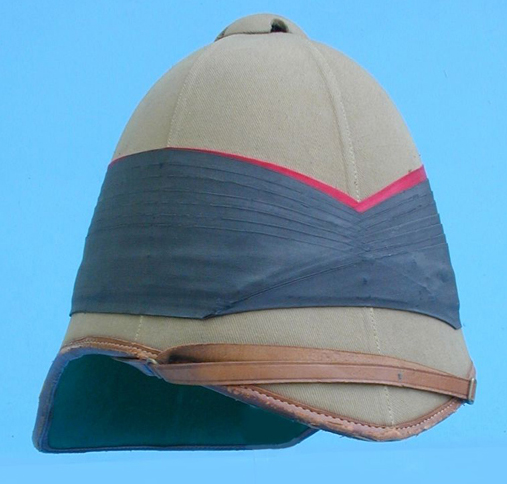
This Colonial Pattern helmet, of the 49th Ottawa-Carleton Rifles, illustrates the most common form of the puggaree with two folds: front and rear. (Collection of Clive M. Law)
The puggaree (or pagri, pugri etc.) was an addition to the headgear of the British soldier primarily being for protection against sword cuts but also protection from the heat of the sun. Just how effective it was in this latter use is debatable. In its many forms it was also a decorative item and was additionally used to distinguish regiments and corps. The cloth wrapped around the crown of the helmet was most commonly folded over in two places: at the front and the rear. However, examples of the puggaree being folded in three, four and six positions are known to have existed. In this article the six seams of the helmet cover are equated to positions on a clock face with 12 o’clock being the rear seam and 6 o’clock being the front seam etc. Continue reading
A Study of the British Officer on Active Service in South Africa 1899 – 1902
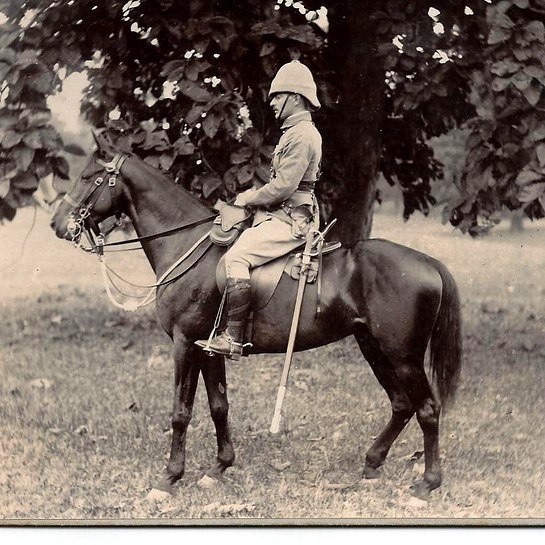
Mounted officer wearing khaki drill frock, Sam Browne belt rig, foreign service helmet and pantaloons tucked into Stohwasser gaiters. (Photo: James Holt collection)
Throughout the Twentieth Century, the world’s Super Powers have waged war against a sometimes seemingly invisible, highly mobile enemy. An enemy familiar with the lands he defends and what it takes to survive in them. France and later the United States struggled through Viet Nam and the former Soviet Union endured the hardships offered by Afghanistan. At the dawn of the Twentieth Century Britain ventured into South Africa. The campaign that followed was an omen of how war would be waged in the new century. A tree of terms we are all too familiar with now has roots embedded on the Veldt of South Africa… commando, guerilla war, trenches, machine gun, barbed wire, and sadly concentration camps.

